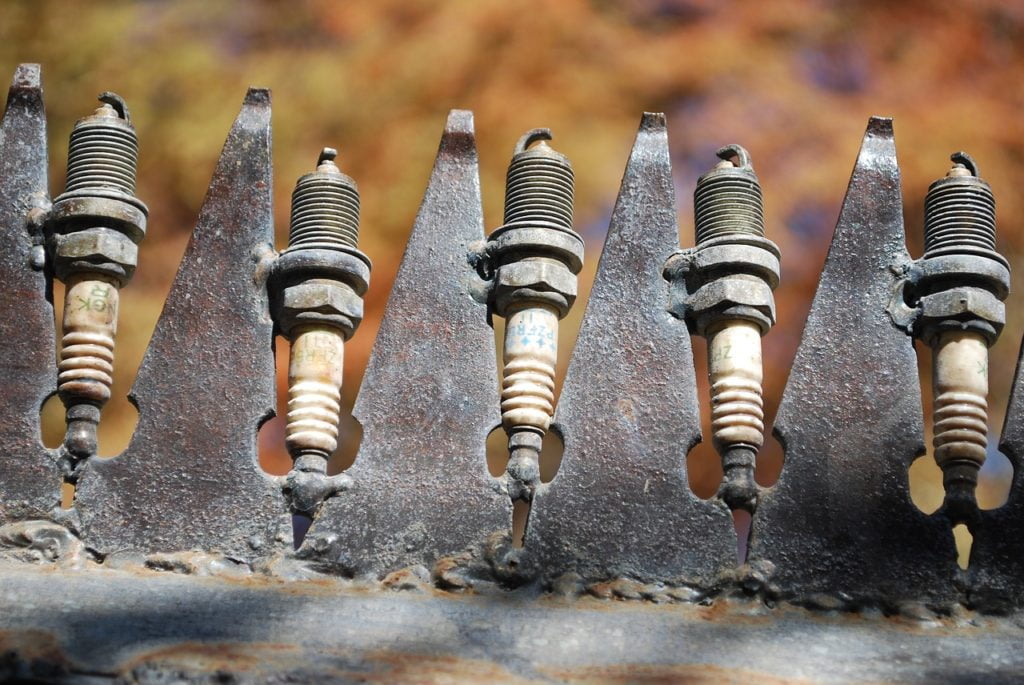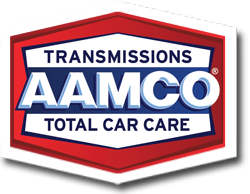No one wants to see a dashboard warning light appear but the Check Engine Light is probably the most dreaded of them all. Part of that dread may come from how vague it is. It can be hard to guess what the problem could be and therefore one can’t know how expensive a repair may be. There are a variety of possible causes, ranging from simple fixes to costly repairs. In this blog, we’ll go over a few of the most common auto repairs that could cause your vehicle’s Check Engine Light to illuminate.
The Car Experts
Your car is a precious and reliable transportation tool. Repeat after us. Count on our experts to keep yours in top-shape today!
Worn Spark Plugs or Wires
Over time, your spark plugs and the connected wires will become worn and possibly corroded. If one or more of them are wearing out or have failed, you’re likely to experience misfires. When a misfire happens, you’ll notice your car jerk, in particular during acceleration. This is because spark plugs are responsible for igniting the air-fuel mixture in your car’s engine and that timing must be right. When that timing is off, it can cause a misfire and your Check Engine Light may be triggered.
Generally, you should aim to replace your spark plugs every 30,000 miles or or as recommended in your vehicle’s owner’s manual, depending on what type of spark plug you’re using. Fortunately, this is an affordable and easy repair that you may even be able to do yourself at home if you’re good with cars.

Bad Oxygen Sensor(s)
Your car or truck should have two oxygen sensors that help monitor the amount of oxygen traveling through the exhaust system. This helps determine how much fuel should be circulated through the engine to have the proper air-fuel mixture. If one or both oxygen sensors are worn out or have failed, it could cause excess fuel to be sent into your engine, it may trigger your Check Engine Light.
Not only will a vehicle’s fuel economy take a hit with a failing oxygen sensor, but it can also cause more serious damage to other parts such as a catalytic converter or spark plugs.
A Failing Catalytic Converter
Your catalytic converter is part of the exhaust system in your car. Simply put, it converts toxic carbon monoxide into carbon dioxide in the combustion chamber. If it becomes clogged, your catalytic converter may fail and trigger your Check Engine Light, along with causing any of the following: unusual sounds while driving, discolored smoke from the exhaust pipe, and even bad smells.
Aside from possible damage to other parts of your car, a failed catalytic converter means you won’t be able to pass, many states’ necessary emissions tests.
A Loose Gas Cap
Your car’s fuel delivery system is a sealed system that ensures fuels is adequately circulated through the engine, as well as not allowing fumes to escape the fuel tank. If your Check Engine Light comes on just after filling up your gas tank, double check that the gas cap is tightened properly. If the gas cap is loose, it can allow fuel to escape via evaporation and your fuel economy can also take a hit. Once you check your gas cap, it can take up to 15-20 miles before the light may turn back off.
A Bad Mass Air Flow (MAF) Sensor
As small as it is, your Mass Air Flow Sensor is essential to proper function of your engine and also not cheap to replace. It regulates the amount of both air and fuel your engine receives. That means the MAF sensor is the key to a proper air-fuel ratio, which is essential to a healthy engine. When this sensor fails, your car can’t adjust to changes such as altitude to make sure your engine gets the proper amount of oxygen.
If the Mass Air Flow sensor is the cause behind your Check Engine Light, you may also experience poor fuel economy and your car may hesitate while in motion.
A Faulty Alternator
The alternator is a key component of your car’s electrical system. It works with the battery to ensure key electrical components get the power they need to function. An alternator that’s wearing out will trigger the Check Engine Light and you should take it seriously.
If the alternator fails while you’re driving, you won’t have any power brakes or power steering to help control the motion of your car. This poses a huge safety risk because it involves much more than just your radio and interior lights.
A Vacuum Leak
Your car’s exhaust system uses a vacuum system to help lower harmful emissions, keeping toxic fumes inside the engine instead of letting them out through the exhaust pipe or into the cabin of the car. Over time, hoses and seals can become dry and cracked, leading to a vacuum leak that can trigger your Check Engine Light. While this can be tricky to find, it’s actually a relatively inexpensive repair and should be taken care of as soon as possible to maintain optimal performance.
Trust AAMCO Chester with Car Diagnostics
Your Check Engine Light can be intimidatingly vague. Luckily, the mechanics at AAMCO Chester are trained to accurately diagnose and repair any underlying problem with your car. Having the problem diagnosed soon after your Check Engine Light comes on can prevent further damage to your car, ensuring a longer life for all essential systems.
Want to read more articles from AAMCO Chester, VA?
Is Your Car Overdue for a Tune-Up?
There’s a list of regular maintenance services that help keep your vehicle running at its best. To keep the engine operating efficiently, it’s important to schedule regular tune-up services. Depending on your vehicle, a tune-up should be done around every...
What Does a Transmission Rebuild Entail?
When it comes to transmission repairs, service repair types will differ depending on your vehicle’s needs. While some problems can be solved with a simple transmission repair, others may mean the system needs to be rebuilt or replaced. Knowing the signs of worn...
Transmission Troubles: Repair vs Rebuild – A Practical Guide to Making the Right Decision
Dealing with a troublesome transmission? If gear shifts feel rough, strange sounds are coming from under the hood, and your car’s performance has taken a hit, it may be time for a transmission service. When it comes to transmissions, it can be tough to know which...
AAMCO Chester, VA
Address:
12341 Jefferson Davis Hwy
Chester, VA 23831
Call: (804) 621-2062
Schedule: Book Online
Directions: Visit us Today
Hours of Operation
Mon-Fri: 8:00am to 5:30pm
AAMCO Chester
Transmission & Auto Repair![]()
![]()
![]()
![]()
![]()
.




